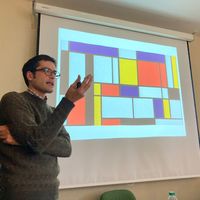
James D Austin
I study questions related to diversification of taxa, particularly at genetic and genomic levels. This includes intra-specific and inter-specific questions. Much of my research of late has focused on small mammals but I and my students have worked on everything from stream fish to crocodiles.
less
Related Authors
Mahendra Maharjan
Tribhuvan University
Gururaja KV
Manipal Academy of Higher Education
Diego F Cisneros-Heredia
Universidad San Francisco de Quito
Andrew Dobson
Princeton University
Daniel Rubenstein
Princeton University
Raúl Maneyro
Universidad de la República
Andrew J Crawford
Universidad de los Andes (Colombia)
Alejandro GARCIA MONTON
Universidad de Granada
Ulisses Caramaschi
Museu Nacional, UFRJ
Ronit Amit R.
Universidad de Costa Rica
InterestsView All (6)










Uploads
Papers by James D Austin
economically important fish distributed throughout the
major tributaries of the Amazon River. C. macropomum
require a suite of habitat types for different life stages
making them potentially susceptible to the impacts of
habitat fragmentation and alteration. As a means of better
understanding the potential impacts of development,
baseline data on connectivity and patterns of gene flow in
species from relatively undisturbed habitat will be of value
to monitor potential ecosystem impacts of anthropogenic
habitat alteration on native fish communities. We used 13
single sequence repeat markers to determine if fine-scale
structuring could be detected at the landscape scale at the
Pacaya Samiria National Reserve, Peru´. We also applied a
model testing approach to evaluate the strength of different
migration models, including panmixia, stepping stone and
isolation models. Bayesian clustering detected a single
genetic grouping across 131 fish. However, a comparison
of marginal likelihoods for alternative migration models
across PSNR supported a stepping stone model, rather than
panmixia (Probability *1.0). These results demonstrate
that even in highly migratory fish with limited genetic
structure, the effects of anthropogenic aquatic habitat
alterations can be explored using genetic data